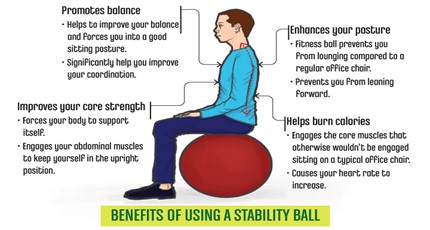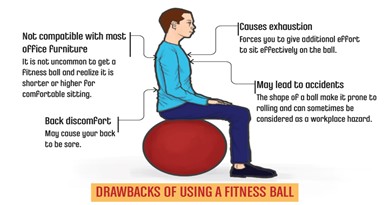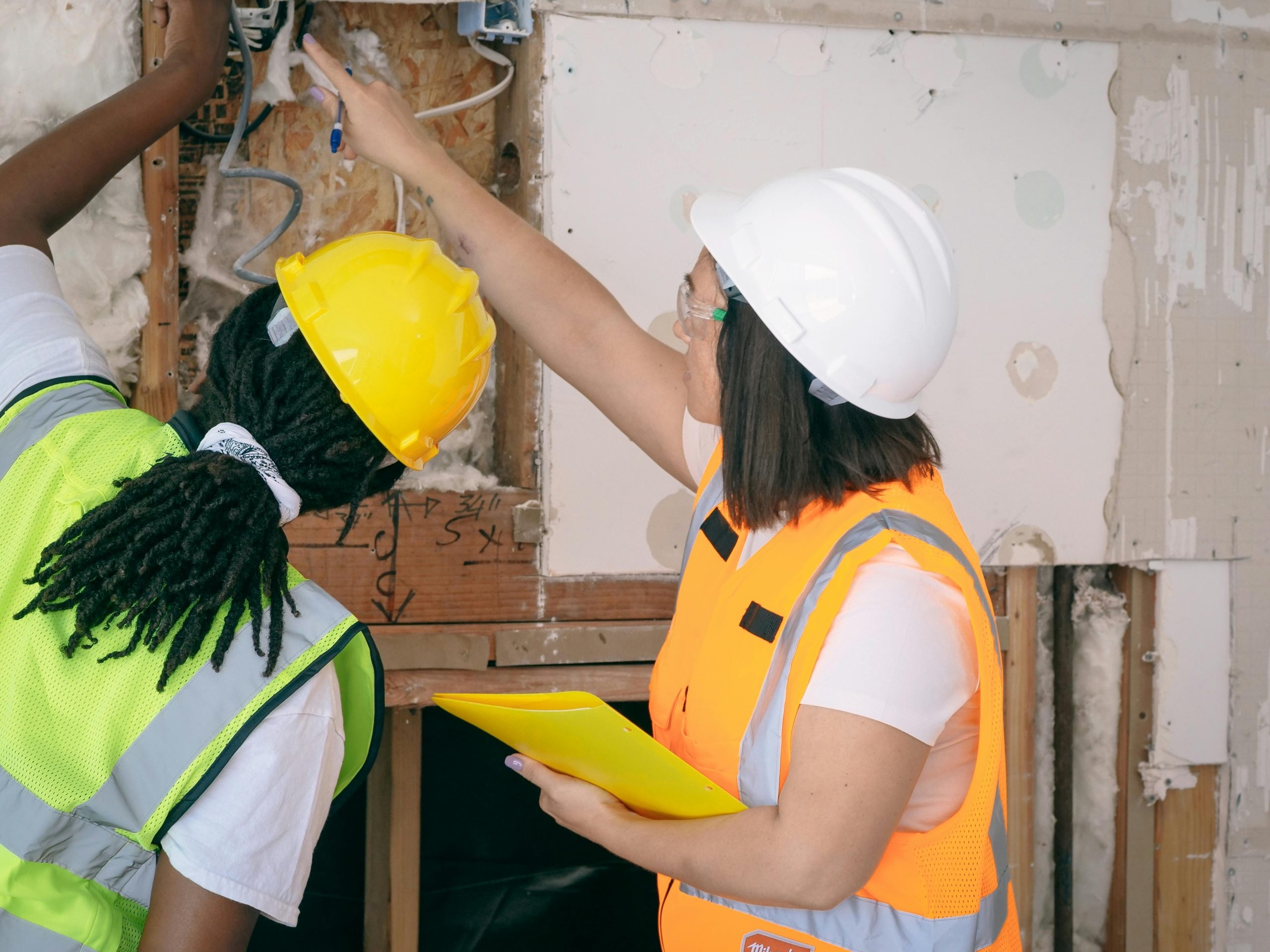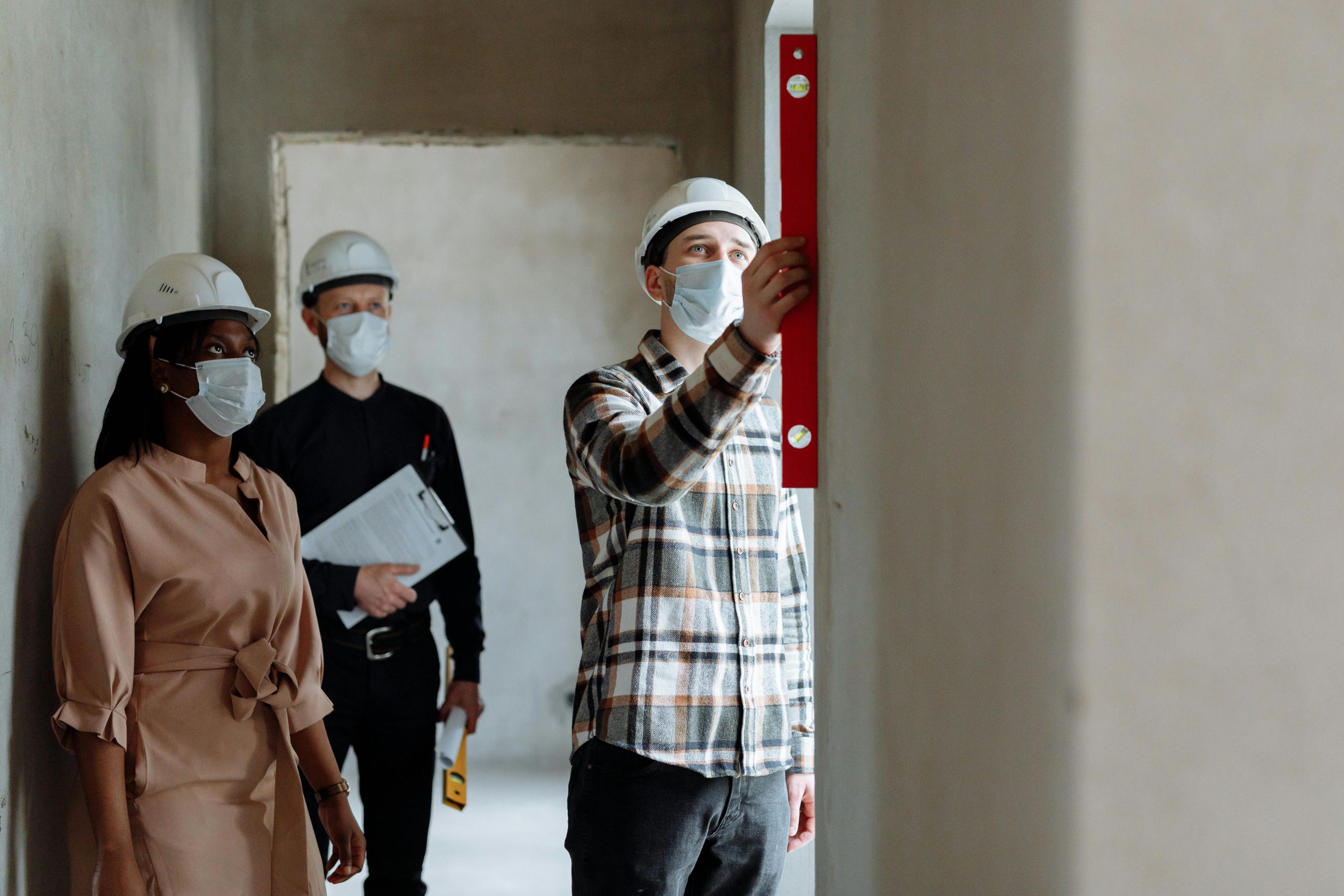
We all strive for that superior posture and other health improvements and this has led to the widespread use of exercise balls, also known as fitness or stability balls. There is much documented comment plus anecdotal evidence, mainly from fitness companies and product providers, promoting the health benefits of using exercise balls. This increased usage has also extended to the workplace with many people now exchanging their office chair for one of these exercise aids. We review these issues surrounding exercise ball safety at work.
Exercise Ball Safety at Work
Are exercise balls safe and acceptable for the work environment?
Due to the increase in technology use and industry mechanisation, many jobs nowadays require people to sit whilst working. Good posture is essential as part of a healthy lifestyle, the Harvard Medical School point out that good posture is important to balance by standing up straight centring your weight over your feet. This also helps you maintain correct form while exercising, which results in fewer injuries and greater gains.
Veritas Health point out the fact that an exercise ball is an unstable unit— stating that when you sit on this ball or use it for a workout, the muscles that stabilise your spine are activated in order to keep you from falling or losing balance. These muscles typically include the superficial and deep groups that surround and support your spine. Activation of your spinal muscles can help strengthen and tone the muscle fibres, improving pain, stiffness, weakness, and function in your back.
It should also be noted that unsuitable seating can cause people to adopt awkward postures which can lead to discomfort, back pain and upper limb disorders. This may prove costly to employers in the form of employee absences, potential civil claims and lost production. Individuals also bear some of the costs in the form of suffering and lost income.
When considering exercise ball safety at work, we must therefore ask ourselves if it's ever acceptable to use an exercise ball as an office chair?
Sitting on an Exercise Ball | Risks & Benefits
Opponents of using exercise balls to sit on at work argue that what is desirable in a chair is not the same as what is desirable in a piece of exercise equipment. A chair, it is said, should take pressure off the low back and provide support for the arms, which can alleviate discomfort and lessen fatigue. The Health and Safety (Display Screen Equipment) Regulations 1992 stipulates in the Schedule the minimum requirements of the work chair
The constant muscle activation required when sitting on a ball for prolonged periods can increase fatigue and make back pain worse. Research overwhelmingly shows that a chair is a better option than a ball for sitting on, at least when you are at work.
Benefits of Using a Stability Ball for Exercise
There are several benefits of using a fitness ball. The following are the most significant benefits:

Drawbacks of Using a Fitness Ball as an Office Chair
Fitness balls do not come without a few drawbacks. It is essential for your comfort that you get a fitness ball size that is compatible with the length of your legs. Here are a few disadvantages of using a fitness ball:

- The instability of the ball increases the risk of trips and falls.
- The ball requires the individual to keep both feet planted on the ground whilst trying to remain postural control without a back rest.
- Studies have reported that there has been increased discomfort in the prolonged use of sitting on the ball.
- Sitting on the ball for 1 hr minimum has led to greater spinal shrinkages compared to a standard office chair.
- Without the person having back support the individual will most likely adopt a kyphotic posture (Also known as: round back, hunchback, Kelso’s hunchback) which leads to spinal shrinkage.
Conclusion
So, is sitting on an exercise ball as opposed to an office chair at work a bad idea? In short, yes. Chances are you will experience more low back and neck discomfort without any benefit to your posture or core muscle strength. If you like the idea of the extra calorie burn, you can get the same effect from walking 1/3 of a mile at break time. Getting up from your chair a few times per day, stretching and walking around the office will also do more to improve your posture and reduce pain than sitting on a ball.
The idea of improving your health while doing something you have to be doing anyway is attractive. However, this is not a good means to do it. If you want to improve your health, eating healthfully, being active, stretching, and engaging in an effective exercise program are much better ideas than swapping out your chair for an exercise ball. Save the exercise ball for crunches and wall squats.
Switching your office chair for a fitness ball is unwise, especially if you are looking to use it over an 8-hour workday. The fatigue and exhaustion make it extremely hard to focus on your daily tasks, and if not careful, an exercise ball can be a workplace hazard. For the office, choose an ergonomic chair or consider a sit-stand workstation. Taking several breaks to stand up between working on your computer will also help get your blood flowing.
Speak to one of our Health and Safety Consultants today for advice and guidance managing safety issues in the workplace.






